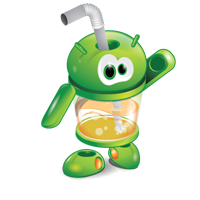I am sure you might be wondering and thinking about the title of the post :), but yes the title is perfectly suits best to developers, as far as I know we android developers are lazy in writing code like findViewById(), click listeners, etc. so how can we optimize throughput time for writing business logic for the app and avoid such code to write. So Let’s be a lazy but a productive android developer. How? Well, that’s what I am going to write about.
There are many 3rd party libraries and frameworks available, either we don’t know about it or we haven’t used or we have defined our own libraries or we haven’t thought about to use such libraries due to ‘n’ number of reasons. If we use some of them in android app development then we could achieve tasks like providing compatibility, cool and polished UI, clean code, etc. So I would be exploring more about such libraries which may help novice and experienced developers.
Let’s talk about Dependency Injection libraries today.
What is Dependency injection?
Dependency injection is a software design pattern that allows the removal of hard-coded dependencies and makes it possible to change them, whether at run-time or compile-time. [Source: Wikipedia]
Some of the popular and widely used Dependency Injection Libraries are:
RoboGuice:
Roboguice is a dependency injection framework for Android applications, that brings the simplicity and ease of Dependency Injection to Android, using Google’s own Guice library. It smoothes out some of the wrinkles in your Android app development experience make things simple and fun. Do you always forget to check for null when you getIntent().getExtras()? RoboGuice 2 will help you. Think casting findViewById() to a TextView shouldn’t be necessary? RoboGuice is on it.
Using RoboGuice, you can inject your View, Resource, System Service, or any other object. RoboGuice can help you to slim down application code. Less code means less chances of issues/bugs and can help you to save efforts required to write or modify particular code in a project. It helps you to generate readable code which could be easier to follow.
Let’s look at different usage of RoboGuice library.
Usage of RoboGuice library:
- Views Injection:: To initialize views, use @InjectViews, for example: @InjectView(R.id.textView1) TextView textView1;
- Resources Injection: To initialize and get resources, use @InjectResources, for example: @InjectResource(R.string.app_name) String name;
- System services Injection: To initialize and access system services, use @Inject, for example: @Inject LayoutInflater inflater;
- POJO object Injection: To inject and initialize POJO object, use @Inject, for example: @Inject Foo foo;
Installation
To use RoboGuice, you need to download following JAR files and add them to your claspath:
http://repo1.maven.org/maven2/com/google/inject/guice/3.0/guice-3.0-no_aop.jar
http://repo1.maven.org/maven2/com/google/code/findbugs/jsr305/1.3.9/jsr305-1.3.9.jar
Let’s look at an example of general activity code:
Example
public class TestActivity extends Activity{
TextView textView1;
TextView textView2;
ImageView imageView1;
String name;
Drawable icLauncher;
LocationManager locManager;
LayoutInflater inflater;
NotificationManager notifyManager;
@Override
protected void onCreate(Bundle savedInstanceState) {
// TODO Auto-generated method stub
super.onCreate(savedInstanceState);
setContentView(R.layout.layout_test);
textView1 = (TextView) findViewById(R.id.textView1);
textView2 = (TextView) findViewById(R.id.textView2);
imageView1 = (ImageView) findViewById(R.id.imageView1);
name = getString(R.string.app_name);
icLauncher = getResources().getDrawable(R.id.ic_launcher);
locManager = (LocationManager) getSystemService(Activity.LOCATION_SERVICE);
inflater = (LayoutInflater) getSystemService(Activity.LAYOUT_INFLATER_SERVICE);
notifyManager = (NotificationManager) getSystemService(Activity.NOTIFICATION_SERVICE);
textView1.setText("Hello World! RoboGuice demo");
}
}
Let’s check the magic of RoboGuice and let’s slim down the code.
Using RoboGuice
public class TestActivity extends RoboActivity{
@InjectView(R.id.textView1) TextView textView1;
@InjectView(R.id.textView2) TextView textView2;
@InjectView(R.id.imageView1) ImageView imageView1;
@InjectResource(R.string.app_name) String name;
@InjectResource(R.drawable.ic_launcher) Drawable icLauncher;
@Inject LocationManager locManager;
@Inject LayoutInflater inflater;
@Inject NotificationManager notifyManager;
@Override
protected void onCreate(Bundle savedInstanceState) {
// TODO Auto-generated method stub
super.onCreate(savedInstanceState);
setContentView(R.layout.layout_test);
textView1.setText(name);
}
}
Now I am sure you could realize benefits of using RoboGuice, so let’s talk about benefits:
Benefits of using RoboGuice
- No need to initialize views, if you want then Inject it using @InjectViews
- No need to initialize System service. If you need then Inject it using @Inject
- No need to initialize Drawable, string and other resources. If you require then Inject it using @InjectResource
- All of these above practices helps you to slim down the code.
- Less code => Less chances of bugs/issues
- Less code => Android developer can save coding efforts and can focus fully on actual business logic of android app
RoboGuice and ActionBarSherlock
As I have mentioned earlier in alert box that you are required to extend either RoboActivity or RoboFragment to use RoboGuice in either Activity or Fragment particularly. But what if you have included ActionBarSherlock in your project to manage compatibility? The problem is you have extended either SherlockActivity or SherlockFragmentActivity for your activity or fragment particularly and now the situation is we could not use RoboGuice with ActionBarSherlock.
But There is one solution for it too, you have to define custom base classes for Activities and Fragments to use RoboGuice and ActionBarSherlock both.
You can download base classes from here: https://github.com/rtyley/roboguice-sherlock or download a JAR file for the same: RoboGuice+Sherlock.jar, include either of them in your project.
Summing up
This has brought to the end of this part. In this part, we have talked about RoboGuice and its usage/benefits in Android app, still if you think I have missed out any points, please feel free to put your comment.
See you in the next episode, where we shall cover Part 2: Genymotion. Till than happy dependency injecting!



